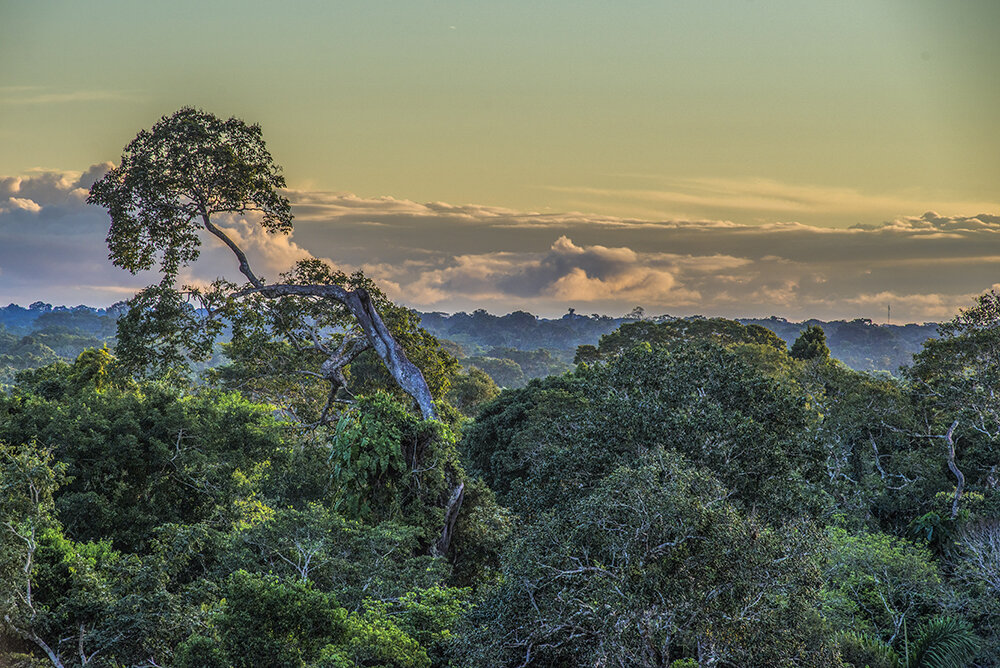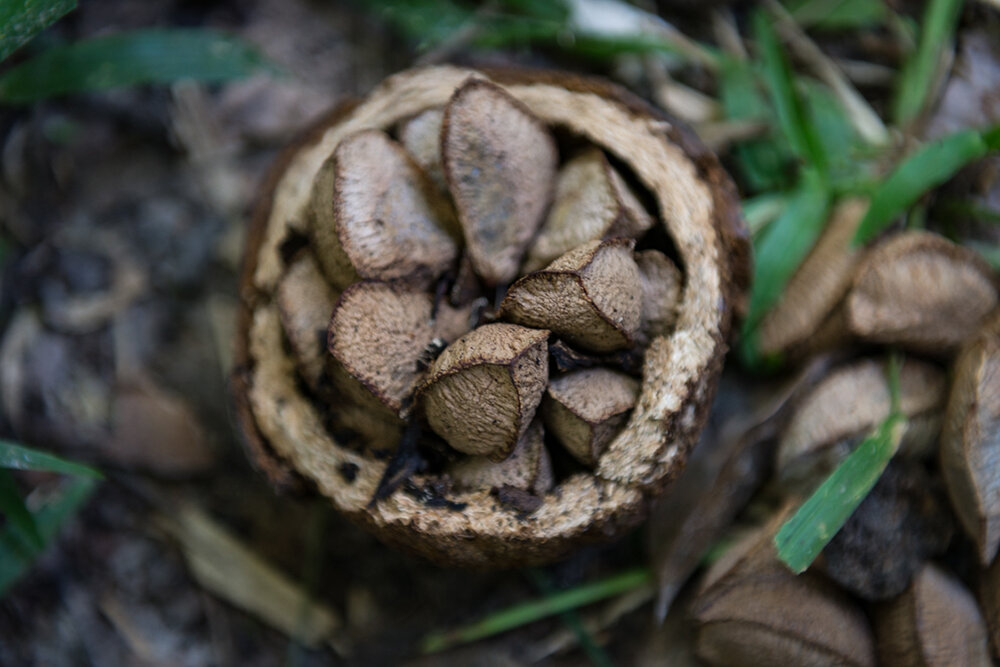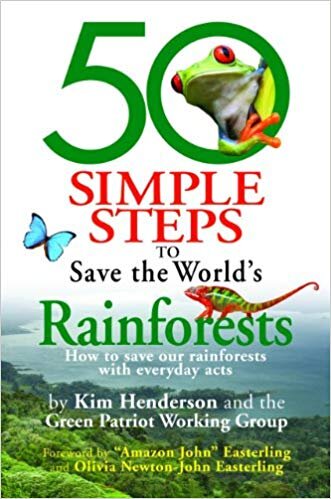
ACEER
ACEER Editorial Staff
Learn more about ACEER
November 23, 2019
8 Ways to Save the Amazon Rainforest from Wherever You are in the World
Jiordan T. Drior

Peruvian Amazon – Photo taken by Jon Cox
Eco-systems all over the world play a vital part in keeping the earth healthy and vibrant, but if there is one that is the most impactful to not only the earth, but human vitality, it would be the tropical rainforest. Being the richest and most biodiverse ecosystem on the planet, the tropical rainforests of the world not only present us with vivid beauty that leave us in awe, but they provide us with the basic foundations of our survival on this mysterious planet. Absorbing CO2 and releasing oxygen that keeps us alive, regulating the world’s water cycles, and even providing us with life saving medicines are only a few of the countless ways we depend on rainforests for our well being. While many believe the rainforest has little to do with their day to day lives, there are actually numerous ways we impact the rainforest every single day with our consumer choices. In this article I’ll be talking about 8 ways you can help save the Amazon rainforest right from your hometown!
BUY SUSTAINABLE PERSONAL CARE PRODUCTS
In this day and age, many individuals have the luxury of being able to bathe and lather themselves with exotic oils, washes, and other day to day personal care products daily. Many of these oils used are produced and manufactured in unsustainable ways, often leading to deforestation and negatively impacting the lives of indigenous Amazonians. By buying sustainable personal care products, you are fighting against deforestation and helping native people of the forest make a sustainable living. www.rainforest-alliance.org is a good resource to use to help find sustainable personal care products that allow you to pamper your body with products that not only support the welfare of the rainforest, but also its indigenous inhabitants.
EAT LESS BEEF
As the years have gone by, many people are coming to the realization that red meat, such as beef, is not only bad for their health, but it also devastatingly impacts the rainforest. The clearing of tropical rainforest for cattle grazing has been commonplace for quite some time and the Brazilian Amazon has suffered the most from this unsustainable practice. Nearly 80% of all deforestation in Brazil can be directly linked to cattle ranching. By eating less beef or giving it up entirely, you are taking a stand for the health of our rainforests and using your voice through your individual actions. If you still choose to eat beef, choose better beef. Sustainable beef from America and Europe are your best choices, and you can use resources such as www.aliancadaterra.org.br and www.rainforest-alliance.org to learn more about sustainable beef choices.
STOP SUPPORTING SOY PRODUCTION
Brazil is surprisingly the second largest producer of soy in the world, and the production of soy can actually be linked to the beef industry. This is due to the fact that upwards of 70% of all soy produced in Brazil goes directly to feed livestock! The production of soy results in mass deforestation throughout the Brazilian Amazon, so even though the number of people purchasing tofu and soy milk has been increasing, it’s actually the demand for meat that’s causing most of this destruction. By reducing your consumption of grain-fed meat and farmed seafood, you are directly reducing your consumption of soy in the process. To learn more about sustainable soy, go to www.responsiblesoy.org.

Photo taken by Jon Cox
EAT BRAZIL NUTS
A delicious and nutritious nut found in the Amazon rainforest, taking part in purchasing these nuts can directly impact the Amazon rainforest in many positive ways. Brazil nuts still have the possibility of being harvested unsustainably, so always make sure to purchase certified sustainably harvested brands, many of these are typically organic. Indigenous groups such as the Ese Eja sustainably harvest Brazil nuts in the Madre de Dios river area of Peru, providing them with a sustainable source of income, while supporting the preservation of their ancestral lands. To learn more about sustainable Brazil nut harvesting by the Ese Eja, click here.
BUY RAINFOREST-FRIENDLY FURNITURE
People don’t often think about where their furniture is coming from while shopping for it, this has led to big problems in the Amazon rainforest, provoked by the logging industry. One of the largest uses of tropical hardwoods is for furniture production, and the U.S is the largest importer of these tropical woods. Woods such as mahogany, ipę (“Brazilian walnut”), and jatoba (“Brazilian cherry”), are commonly used with no regards for forest conservation. By choosing non-tropical woods or FSC-certified tropical woods, and sharing this information with your family and friends, you can send a collective message to manufacturers that destroying the rainforest in the name of furniture is NOT acceptable!
DRINK SUSTAINABLE RAINFOREST TEA
Saving the rainforest while drinking a delicious and calming cup of tea? Yes, it IS possible! A 1989 Peruvian Amazon study published in Nature, showed that harvesting NTFPs (non-timber forest products) is six times more profitable than logging. This gives locals, and native Amazonians a bigger incentive to participate in harvesting NTFPs and leave unsustainable industries for means of income. By purchasing sustainably harvested tea, you are supporting a sustainable revenue for the native inhabitants. You can find a multitude of rainforest-friendly teas on www.rainforest-alliance.org.

Ese Eja Man – Photo taken by Jon Cox
SUPPORT INDIGENOUS AMAZONIANS
The indigenous inhabitants of the Amazon are by far the biggest hope we have in terms of conservation and preservation efforts in the Amazon rainforest. They have been on the forefront of the fight against the destruction of their home for hundreds of years, often putting their lives on the line to protect their ancestral lands. A key way to support them is to contact government representatives in your and Amazonian countries to streamline the process of titling indigenous lands. You can further support them by joining protests that they organize (or signing petitions!), and by purchasing ethically sourced indigenous crafts and fair trade products. ACEER supports the indigenous Ese Eja community by providing all funds of the book co created with them, “Ancestral Lands of the Ese Eja, The True People” to a community fund, in addition to other initiatives to support them. The book can be purchased here.
DONATE
Financial donations are often greatly needed by organizations supporting rainforest conservation since these groups, such as ACEER, typically operate on budgets entirely funded by donations. By donating to ACEER, you are helping us sustain and expand our work in the Peruvian Amazon, and helping us bring the message of conservation home to our local communities. Giving a financial contribution, no matter how big or small, allows us to continue our work in Amazon conservation and education programs that are developing the next generation of conservation leaders. It is people like you that make our work possible! 100% of all donations go directly to our program expenses, you can read more about our programs here and click here to make a donation.
These are only some of the ways you can support the conservation of the Amazon rainforest from right where you are, but we encourage you to do more research on the different ways you can use your voice and consumer choices to make a true impact on the future of the Amazon. It’s important for you to know that it is not too late to turn things around! With the collective efforts of passionate individuals like yourself, indigenous people, and sustainable companies, we have the power to move mountains, or in our case, save the Amazon!
Special thanks to Kim Henderson and Green Patriot Working Group for, “50 SIMPLE STEPS TO Save the World’s Rainforests”, where some of our suggestions and inspiration for the article derived. Her book can be purchased here.

